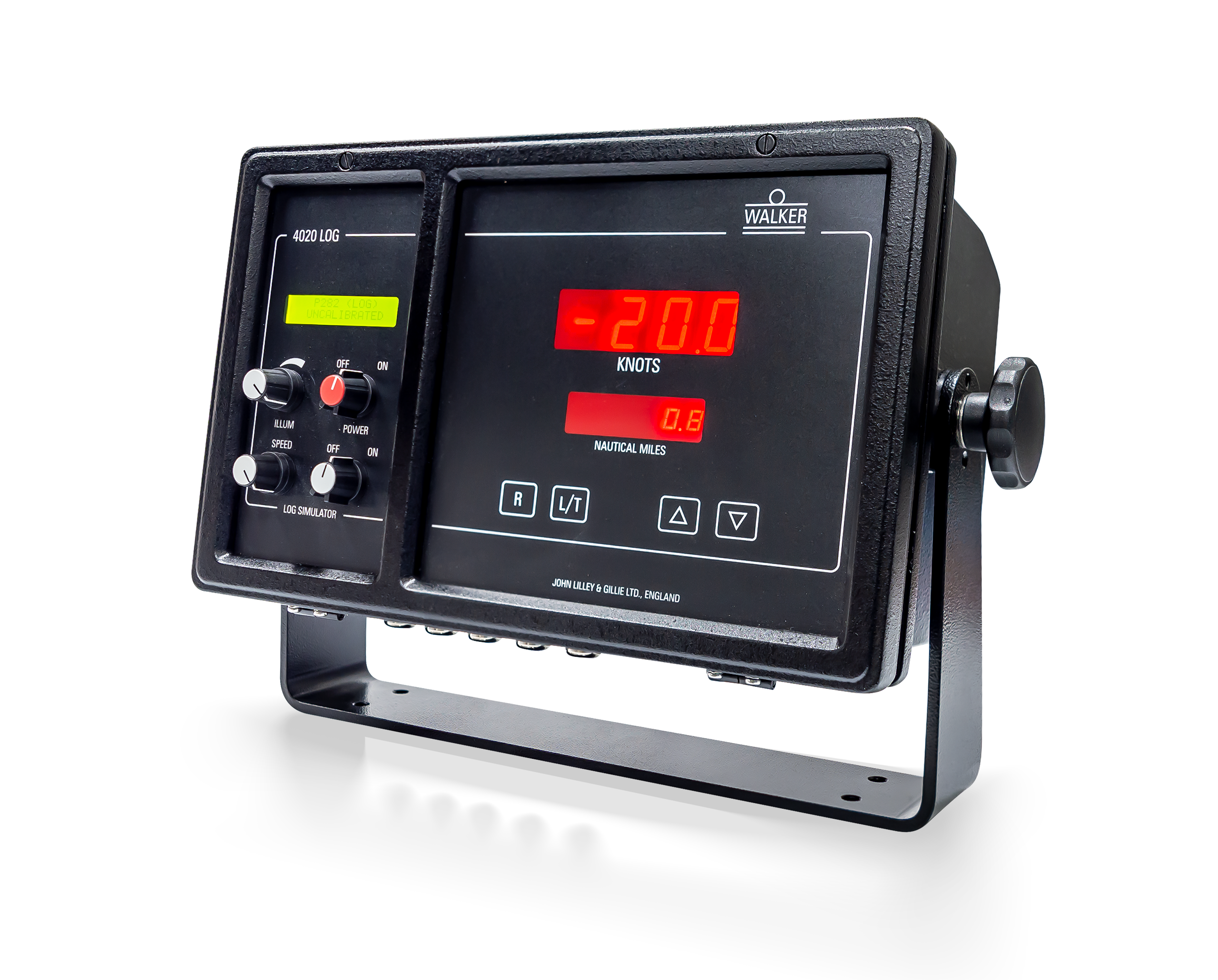
The Walker 4020 (Mk2) is type approved for all sizes of vessels and is normally recommended for smaller vessels with an overall length up to 50m.


It offers both forward and astern speed, with ranges from -20 to +60 knots full scale and provides NMEA0183 and 200PPNM signals to other equipment.
This compact model consists of two main components reducing the number of sub-units required.
It combined the speed and distance indicator in one master unit P282 which results in a smaller, lighter unit that is much simpler to install.
The master unit P282 can be console or bracket mounted for convenience depending on the space available.
In addition, a built-in speed simulator and a removable keypad for calibration come as standard.
It is possible to add modern speed and distance indicators.
The master unit P282 is fully compatible with fixed (P57) or retractable (P99) speed log sensors housed in hull fittings which are suitable for various hull materials, such as aluminium, steel and GRP/wood.
The retractable log sensor (P99) for the steel hull is supplied together with sea valve assembly (P98) which is tested to GL requirements. This arrangement allows future service for the log sensor while the vessel is at sea and thus removes the need for the vessel to enter drydock!
All log sensors * are supplied with a 50-metre cable and run directly to the master unit P282 in the bridge.
For best performance. the recommended maximum distance for this run is 50m or shorter where possible.
* Its operating principle is that a low-frequency AC Electromagnetic sensor induces an electrical voltage in the seawater. This is detected by two electrodes in the sensor face and then converted to a speed reading in the master unit. The distance run is calculated by accurately integrating the speed value with respect to time.